
WESTERN CANADA GENERAL COUNSEL AWARDS

JOIN US ON NOVEMBER 4 AT THE FAIRMONT WATERFRONT | VANCOUVER
WE ARE PLEASED TO ANNOUNCE THE LIFETIME ACHIEVEMENT AWARD RECIPIENT
Robert (Bob) Rooney, KC | Enbridge


WESTERN CANADA GENERAL COUNSEL AWARDS

JOIN US ON NOVEMBER 4 AT THE FAIRMONT WATERFRONT | VANCOUVER
WE ARE PLEASED TO ANNOUNCE THE LIFETIME ACHIEVEMENT AWARD RECIPIENT
Robert (Bob) Rooney, KC | Enbridge
wcgca.ca/2024-finalists
WESTERN CANADA GENERAL COUNSEL OF THE YEAR AWARD
BUSINESS ACHIEVEMENT AWARD
DEAL MAKING AWARD
ENVIRONMENTAL, SOCIAL & GOVERNANCE (ESG) AWARD
LITIGATION MANAGEMENT AWARD
TOMORROW’S LEADER AWARD
Angela Avery, K.C | WestJet Airlines Ltd.
Ken Duke | British Columbia Hydro & Power Authority (BC Hydro)
Maninder Malli | GeoComply Solutions Inc.
Lorne O’Reilly, K.C | Dow Chemical Canada ULC
Monic Pratch | FortisBC
Robert C. Van Walleghem, K.C | Trans Mountain Corporation
Ian Duke | Westbank Corp.
Chelsea McKay Hazewinkel, K.C | Paladin Security Group Ltd.
Tolek Strukoff | Gateway Casinos & Entertainment Limited
Lilac Bosma | Canfor
Cassandra Calder | AltaGas Ltd.
James R. Maclean | Baytex Energy Corp.
Darren Watt | RB Global Inc.
Sheila Colman | Lundin Gold Inc.
Juliamai Giffen | Pembina Pipeline Corporation
Sean Quinn, K.C | Cameco Corporation
Janaya Flower | NOVA Chemicals Corporation
Julie Inch | Canadian Natural Resources Limited
Karen O’Keeffe | Coastal GasLink / TC Energy
Lorne O’Reilly, K.C | Dow Chemical Canada ULC
Helen Cox | Pembina Pipeline Corporation
Tom Ladner | Augusta Group of Companies | Titan Mining Corporation
Andrea Sam | TransAlta
Mark Tallon | People Corporation
For information about sponsorships, please visit wcgca.ca or contact Catherine Jean at cjean@zsa.ca

6 A Bench Like Us — Diversity in the Judiciary
Sebastian Chern, FACL BC
9 A Tale of Two Internationally Trained Lawyers on Their Journey to the B.C. Bar
Tolu Kolawole and Tiffany Ho
10 How Do We Shift Legal Culture? — Improving EDI Through Restorative Principles
Cherolyn Knapp
12 A Different Kind of #MeToo Movement
Aneka Jiwaji
16 What are Law Firms Doing to Support Neurodiversity in the Workplace?
Christine Murray
Indigenous Matters
18 Advancing the Cause of Equality for Indigenous Peoples and 2SLGBTQIA+
Glen Stratton and Breanne Martin
21 To Diversity and Beyond — The benefits of Diversity in the Practice of Law
Andrew Tang
22 Why We are Failing at EDI
Dimple Kainth
23 What Role Do Legal Regulators Play in Boosting Diversity?
Jeevyn Dhaliwal, KC
25 Diversity Then and Now — Where are We Headed?
Mark Seebaran and Bronwen Black 26 Called to the Bar — Religious Belonging in the Secular Practice of Law
Paige Thombs

From the President 4 Be Bold
Lee M.G. Nevens
Chief Executive Officer
5 Reconciliation — Approaching a 10-year Milestone on Call to Action 27
Kerry L. Simmons, KC
Nothing Official 28 Nos Disparus
Tony Wilson,
Isabel Jackson, Committee Chair Editorial Committee
Emma Abdjalieva John Caldwell Demola Okeowo Miranda Wardman Lily Zhang
Tonie Beharrell Dan Melnick Salim Visram Özge Yazar
Deborah Carfrae, BarTalk Editor
BarTalk is produced on the traditional and unceded territories of the Coast Salish peoples, including the Musqueam, Squamish and Tsleil-Waututh Nations.
BarTalk is published six times per year by the Canadian Bar Association, B.C. Branch (CBABC) and is available at cbabc.org/bartalk. This publication is intended for information purposes only and is not legal advice.
CBABC supports more than 7,600 members in British Columbia. We connect our members to the people, knowledge and skills they need to successfully practice.
BarTalk enquiries, suggestions and letters to the editor: Canadian Bar Association, B.C. Branch 915 — 700 West Pender Street Vancouver, B.C. V6C 1G8
t: 604.687.3404 tf: 888.687.3404 e: bartalk@cbabc.org
Membership Enquiries membership@cbabc.org Contact Updates data@cbabc.org Advertising ads@cbabc.org
© Copyright 2024 The Canadian Bar Association, B.C. Branch
BarTalk Publication Sales Agreement #40741008
29 Bar Moves
LEE M.G. NEVENS
II was never meant to be a lawyer. For most of the history of our justice system, people with my socioeconomic background had neither the resources nor the connections needed to become a lawyer. And one that is openly queer, nonbinary and transgender? Never.
Yet, here I am. Not just a lawyer, but President of the largest professional association for lawyers in British Columbia.
I didn’t know any lawyers growing up. My parents were separated, and my primary home was with my dad. He was an artist — a fantastic one, but not a financially successful one — so for much of my childhood we got by on welfare and his occasional night shifts driving taxis. My mom, for her part, worked hard to get by as an administrative assistant.
So, although I had a wonderful childhood, I had no cultural, academic or professional reference points for what lay ahead of me when I went to law school. In fact, law school’s greatest learning curves were cultural and social, not academic. Add being queer and trans to that and it’s no wonder it took me several years into my career before I started to feel any level of comfort with my new profession.
But one of the advantages of having no frame of reference for what it means to be a lawyer and nevertheless becoming one is that I didn’t have a rigid, confining view of what a lawyer is. To me a lawyer is simply a person with 1) a specific skillset, 2) a deep commitment to certain
principles and 3) yes, authorization to practice from the Law Society.
There’s no class attached to that. No race, no gender identity, no specific ability, no religion, no sexual orientation, no requirement to work 80 hours a week to the detriment of your mental health, family and social wellbeing. Distilled down to its essence, the profession of law is primarily just a group of people following and enacting a set of principles.
What that means — and this is the magic of it — is that you don’t have to conform your identity or your life to fit the profession. You can help recreate the profession in your own image by joining it.
The number and depth of problems our society faces right now can at times be overwhelming and profoundly discouraging. We need all hands on deck to find lasting solutions, which means empowering and learning from diverse perspectives to the benefit of all of us.

This has not always been the case, and even today it isn’t easy. There are still many people to whom accessing this profession and its services seems out of reach, particularly those with
We need all hands on deck to find lasting solutions.
intersecting marginalized identities and experiences. The current backlash from some corners of our society to Reconciliation, equity, diversity and inclusion also threatens to shut down some of the incredibly positive change that I’ve personally witnessed during my legal career.
While I genuinely and, as a trans person, quite viscerally fear the violence, cruelty and disinformation that we too often are experiencing, I think that the way to face it is not to shrink back, but to be bolder. One of the critical lessons the queer community offers is that when a bully tries to shove you in a closet, you don’t just cower or punch back — you gather your friends and throw yourself a parade.
Put another way, while I may not have been meant to be a lawyer, I didn’t get to where I am despite my background and identities. I made it here because of them. And I don’t think we can fully provide the steadfast, creative and fearlessly principled legal profession our society desperately needs right now without engaging our shared humanity and the full diversity of our identities and experiences.
It’s a tall ask, but I’ve rarely met a lawyer afraid of a challenge.

Lee M.G. Nevens president@cbabc.org
KERRY L. SIMMONS, KC
On September 30, we observed the National Day for Truth & Reconciliation for the fourth year. This day each year gives us time to reflect on what we have learned and where we are in our journey of Reconciliation with Indigenous peoples, including our Indigenous colleagues and clients. June 2025 will be the 10th anniversary of the Truth & Reconciliation Commission Executive Summary. We can anticipate many assessments of progress on the 94 Calls to Action as the milestone approaches.
Call to Action 27 called upon law societies to ensure lawyers receive the appropriate “cultural competency training,” as it was then called. Each jurisdiction approached the task in a different way. The Law Society of BC created the “Indigenous Intercultural Course,” which all lawyers completed by January 1, 2024, and new and returning to practice lawyers must complete within two years. Others directed lawyers to take “The Path: Your Journey through Indigenous Canada,” a six-module course originally promoted by CBA. These required courses seek to provide a baseline of knowledge shared by all lawyers.
With the educational baseline in place in B.C., a future step is to amend the Code of Professional Conduct to make it clear that lawyers have ethical and professional obligations to foster Reconciliation. The Federation of Law Societies of Canada has issued proposed amendments to the Model Code and invites comments from law societies and individuals by November 29, 2024. The Law Society of BC has conducted two consultations on the
amendments (June 26 and September 26, 2024) in order to inform its comments. The Federation will consider this feedback, make adjustments, and propose amendments to be considered by the Council of the Federation. Once approved, each law society will consider adoption and implementation.
While the majority of proposed amendments are to the Competence sections of the Code, there are also proposed amendments to Integrity, Quality of Service, The Lawyer as Advocate, Duties of Principal, and Discrimination. The proposed amendments will affect all lawyers regardless of whether or not you provide legal services to Indigenous clients. This is because some of the amendments address communication (including advocacy), the impact of trauma on clients and witnesses, and ensuring you take steps to understand the culture of your clients when it is different from your own.
full impact. And unlearning helps with these changes.
To help lawyers advance their knowledge and skills in their Reconciliation journey, CBABC has offered short courses. The 5-year collection, from “Economic Reconciliation — Working in a Colonial Framework” to “Trauma Informed Practice for Lawyers in Small Communities” to “Building Business Relationships,” you can find these and more in PD On Demand. And this fall we have new Advancing Reconciliation courses, including one in partnership with Indigenous Perspectives Society.
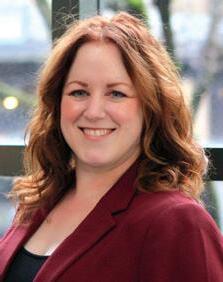
Many of the amendments are arguably long overdue, and the desired actions and attitudes are already embraced by many lawyers. But there is much more to be done within the profession of lawyers (as well as with our laws and justice systems) and the proposed amendments are an opportunity to make more progress.
Lawyers, as life-long learners, know that sometimes our existing knowledge, skills and approaches need a refresh. Sometimes reviewing previous learning after more experience helps the teachings finally land with
While there are intersections between Reconciliation work and equity, diversity and inclusion efforts in our profession, they are distinct concepts as the work comes from different histories and has different approaches. Overlapping themes such as anti-racism and uncovering unconscious bias are covered in our past sessions from our EDI Series, also available on demand.
As the 10-year TRC anniversary approaches, I hope you think about how your knowledge and approach has changed. Although Murray Sinclair, the TRC Chair, said Reconciliation will take generations to achieve, incremental actions will help us make progress.

Kerry L. Simmons, KC ksimmons@cbabc.org
SEBASTIAN CHERN, FACL BC
In recent years, there has been increasing recognition of the importance of diversity within the judiciary in Canada. However, despite notable progress, the representation of Pan-Asian individuals in the judiciary, particularly in British Columbia, remains disproportionately low. This underrepresentation is concerning, and it underscores the need for a more inclusive approach to judicial appointments. While great inroads have been made, more can — and must — be done.
British Columbia is one of the most culturally diverse provinces in Canada, with a substantial Pan-Asian community. According to the 2021 Census, approximately 28% of British Columbia’s population identifies as having Asian origins. Pan-Asian representation within the judiciary does not reflect the province’s diversity.
The lack of Pan-Asian representation in the judiciary affects public confidence in the legal system. A judiciary that mirrors the diversity of the community it serves is more likely to be perceived as fair, impartial and representative. When the judiciary does not reflect the demographic makeup of the population, it can lead to perceptions of bias and a lack of trust. This is particularly relevant in British Columbia, where the Pan-Asian community plays a significant role in the social, economic and cultural fabric of the province.
Diversity within the judiciary brings a variety of perspectives and life experiences that enrich judicial decision-making. Judges from diverse backgrounds can provide unique insights into the cases they adjudicate, particularly those
involving issues of race, ethnicity and cultural practices. This diversity of thought can lead to more nuanced judgments and lead to “impact on the ability of the judges to appreciate their circumstances, assess their credibility, and craft appropriate remedies.”1
Moreover, the underrepresentation of PanAsian individuals in the judiciary may deter talented lawyers from these communities from pursuing judicial careers. Personally, I can count on a single hand the number of times that I have appeared before a Pan-Asian member of the judiciary. When aspiring judges do not see themselves represented on the Bench, they may feel that their chances of being appointed are slim, which can lead to a lack of diversity in the pool of judicial candidates. This cycle perpetuates the status quo and hinders progress toward a more inclusive judiciary.

Additionally, the judicial appointment process itself must be scrutinized to ensure it is free from biases that may disadvantage Pan-Asian applicants. This could include reviewing the criteria and procedures used for judicial appointments to ensure they are transparent and equitable. Furthermore, there should be — and is — a commitment at the governmental level through The Honourable Arif Virani to prioritize diversity in judicial appointments. However, more can always be done, including setting specific targets or goals for Pan-Asian representation within the judiciary and regularly reporting on progress toward these goals. Transparent accountability measures are crucial to drive meaningful change.
The need for more Pan-Asian diversity in the Canadian judiciary, particularly in British Columbia, is clear. While we may now have a Bench that is more diverse than ever, it is critical that we continue to advocate for representation. Borrowing from Lebanese-American author, Kahlil Gibran, “progress lies not in enhancing what is, but in advancing towards what will be.” Canada is, and will always be, diverse. We must continue to push to ensure that our Bench reflects that reality now and into the future.
Addressing this issue requires a multifaceted approach. There needs to be a concerted effort to identify and encourage qualified Pan-Asian lawyers to apply for judicial positions. This involves outreach and mentorship programs to support and guide potential candidates through the application process. Promoting diversity in judicial law clerks can also encourage a “pipeline” toward the judiciary as well. Organizations such as the Federation of Asian Canadian Lawyers (British Columbia) Society, Bar associations and community groups can play a pivotal role in these initiatives.
1 The Right Honourable Beverley McLachlin, Chief Justice of Canada, ‘Judging: the Challenges of Diversity’ (Judicial Studies Committee Inaugural Annual Lecture, Edinburgh, June 2012).
Sebastian Chern wrote this on behalf of the Federation of Asian Canadian Lawyers (British Columbia) Society (FACL BC). Sebastian is the VP External for FACL BC and oversees its Advocacy Committee. He is an associate with Ascent Employment Law.
FACL BC is a diverse coalition of Asian Canadian legal professionals working to promote equity, justice and opportunity for Asian Canadian legal professionals and the wider community. Website: faclbc.ca
Instagram: instagram.com/faclbc
LinkedIn: linkedin.com/company/faclbc


Every provincial election creates an opportunity for CBABC to present Agenda for Justice, an accessible document that explains to government and the public the issues we care about as a profession and that we think will make life better for British Columbians.
After the election. CBABC will launch our Agenda for Justice 2024, fifteen recommendations to address everyday situations affecting people in B.C. — families undergoing a separation, residents who feel unsafe on our streets, rural communities without access to basic legal services and more.
Where do the recommendations come from?
\ EMAIL: ADVOCACY @CBABC.ORG
suggestions where the legal community and the next B.C. government can work collaboratively to move families and communities forward. These recommendations are organized into three key areas:
Better systems and more funding for legal aid, the courts, legal services and internet access will help our legal and justice systems support individuals, families and businesses to thrive regardless of where they live and work, or how much they earn.

Our members. Your experiences on the front lines of client service informed the submissions CBABC has made. In the past year, volunteers on our committees considered which of our 80+ advocacy initiatives, developed over many years, were critical at this point in time. From there, our Policy and Advocacy Committee curated a shortlist, the Board signed off, and our communications team are pulling everything together in a way that makes sense to people who are unfamiliar with the details lawyers well know.
The result will be a roadmap for action to improve B.C.’s justice system and provincial legislation for the benefit of all British Columbians, no matter who wins the election. Agenda for Justice 2024 offers concrete
We shine a light on the people in British Columbia who are too often left out. Recommendations include a child protection system where children have a voice, data collection that ensures marginalized people are seen, and increased funding for approaches that meaningfully change the experience of Indigenous peoples.
All actors in the justice system — police, government, lawyers and judges — have an important role to play. When those roles are respected and adequately funded, we can be confident that British Columbians feel safer and can access the services they need.
Keep an eye on our website for the launch of Agenda for Justice 2024. Your membership makes this work possible and keeps our voice strong.
TOLU KOLAWOLE AND TIFFANY HO
In the multicultural landscape of British Columbia, the legal profession reflects the diversity and richness of its population. Globalization has brought a surge of Internationally Trained Lawyers (ITLs) to British Columbia, some of whom are experienced lawyers in their home countries, enriching the legal community with diverse backgrounds, specialized skills and unique perspectives.
The journey to becoming a lawyer in B.C. varies depending on where the law degree was earned. There’s a predictable path for those who earned their law degrees in Canada, and a not so predictable one for those who earned their degrees outside Canada — ITLs.
ITLs seeking admission to the B.C. Bar must have their foreign law degrees evaluated by the National Committee on Accreditation (NCA) of the Federation of Law Societies of Canada (FLSC) to ensure their knowledge of Canadian law is equivalent to that of a Canadian law school graduate. The NCA may require supplemental exams or courses for full accreditation. Upon passing these, ITLs receive a Certificate of Accreditation, allowing them to pursue articles and enroll in the BC Law Society Admission Program.
Tolu, who moved from Lagos, Nigeria to Victoria, B.C. in 2018, faced unique challenges in trying to
be a lawyer in B.C. due to limited information about the NCA process, cultural integration and the lack of study buddies. Tiffany, who pursued law school in the United Kingdom, found the journey particularly challenging during the COVID-19 pandemic while navigating NCA qualifications and seeking articling positions. Tolu and Tiffany’s NCA experience tested their adaptability, determination and resilience as they balanced work and study to complete the NCA exams.
insights into B.C. legal practice. This role provided skills that helped them transition into their articles. ITLs in legal assistant roles can acquire technical and soft skills for a smoother transition to articling and practising law. As a legal assistant, Tolu worked on a large and complex litigation file, familiarized herself with the B.C. court system and rules, learned e-trial software and built valuable relationships with team members. Tiffany on the other hand gained experience in drafting contracts and litigation documents, managing transactional

Finding articles can be daunting for both Canadian law school graduates and ITLs. Many ITLs often lack the strategic advantages that Canadian law school graduates possess, such as access to a Law Careers Office, On-Campus Interviews and peer support. This void is even more acute for ITLs who are members of visible minority groups or recent immigrants to Canada. ITLs need creativity and resilience to navigate the challenges of finding articles. Creativity involves exploring unconventional routes to find articles and to learn by osmosis, including working as a legal assistant, paralegal or other law adjacent roles in a law firm or legal department.
For Tolu and Tiffany, working as legal assistants proved valuable for finding articles and gaining

and litigation matters and expanding her professional network.
The landscape of the Canadian workforce is evolving, and those seeking articling students should consider ITLs with law degrees who are eager to practise in Canada. The talent pool for articling students is broader than initially thought, and ITLs are a valuable asset to the legal field. Their diverse backgrounds and unique perspectives reflect Canada’s multiculturalism, enriching the legal profession with a broader range of experiences and insights.
CHEROLYN KNAPP
The legal profession, often seen as a stronghold of justice and equality, has struggled to create an inclusive environment for all members. For equity-seeking lawyers, the experience of discrimination and exclusion can have a devastating impact on wellbeing. Restorative justice offers a promising approach to address these harms and foster a diverse and inclusive legal community.
Narratives on the personal toll of feeling like an outsider to the profession are readily available. For example, documentaries, But I Was Wearing a Suit and But I Look Like a Lawyer highlight systemic racism and discrimination faced by Indigenous and Asian Canadian lawyers and argue for the need for systemic changes within the legal profession.
The original Touchstone report, published in 1993, highlighted the challenges faced by women in the legal profession. Subsequent Touchstone reports and other studies have shown that while progress has been made, there is still work to be done to create a more equitable and inclusive environment for all lawyers.
The National Study on the Health and Wellness Determinants of Legal Professionals in Canada included recommendations to reduce the stigma experienced by several groups, including legal professionals who are women, early career, LGBTQ2S+, Indigenous, ethnicized or live with a disability.
The challenge is how to bring about cultural change to a profession with entrenched beliefs, values and
behaviours that have been passed down for generations. Restorative justice processes and practices provide a vital framework for the profession in shaping its path forward.
In The Little Book of Restorative Justice, Howard Zehr outlined key principles. When harm happens, the adversarial justice system focuses on what laws have been broken, who did it, and what they deserve. Conversely, “restorative justice is an approach to achieving justice that involves, to the extent possible, those who have a stake in a specific harm to collectively identify and address harms, needs and obligations in order to heal and put things as right as possible.”
1. Who has been harmed?
2. What are their needs?
3. Whose obligations are these?
4. Who has a stake in this situation?
5. What are the causes?
6. What is the appropriate process to involve stakeholders in an effort to put things right and address underlying causes?

Addressing discrimination and exclusion means exploring sensitive topics that are difficult to talk about without defensiveness and reactivity. Resistance to the Law Society of Ontario’s mandated declaration affirming a lawyer’s commitment to upholding the principles of human rights and equality exemplified the capacity for polarization over equity, diversity and inclusion initiatives in the legal profession. Different approaches are necessary for different results.
Yet a restorative justice approach requires something more than simply mediation of parties’ positions. It entails asking a set of guiding questions when a wrong has occurred and designing a process around answers to these questions:
Rooted in ancient Indigenous cultures around the world, modern restorative practices have emerged for various contexts. Beyond the criminal justice realm, restorative justice programs effectively and equitably address bullying, violence and vandalism in schools and communities. Restorative practices are an emerging topic among human resources professionals in an effort to restore workplace teams after harms have occurred and workplace investigations are conducted. Peacemaking circles provide opportunities for community members with divergent perspectives to come together to speak candidly about conflict, pain and anger. Circles can be designed for various functions, such as talking, understanding, healing, communitybuilding and conflict.
By shifting the focus of EDI discourse from adversarialism to accountability and healing, restorative justice can help the legal profession to address the underlying causes of the inequities that exist within it and build a more supportive and inclusive culture.
Cherolyn Knapp is a lawyer, mediator and workplace investigator based in Victoria, B.C. She volunteers on CBABC’s Equity, Diversity & Inclusion Committee and Provincial Council.

Empower others to help future generations through their Will. With your expertise, your clients can make a profound impact on children’s health.
Join our network at bcchf.ca/legacy
Diversity as a field of study has evolved significantly since the 1980s. Initially it sought to describe demographic differences in race, ethnicity and sex. Over time it’s expanded to gender identity, neurodiversity and much more. As Rosemary Hays-Thomas notes in her 2022 edition of Managing Workplace Diversity, Equity, and Inclusion: A Psychological Perspective (available at Courthouse Libraries BC), the evolution continues. Representational diversity is a start, but it is insufficient. Inclusivity (when diverse people feel valued and accepted) and equity (when diversity does not impede equal outcomes), have joined the stage, giving rise to the triumvirate of these terms: DEI.
At Courthouse Libraries BC, we’re interested in reducing traditional systemic barriers to information. We redesigned our public legal information website, Clicklaw, and relaunched it this year. We used a gender-based analysis plus (GBA+) approach. It starts with the idea that gender greatly shapes experiences, and considers factors like age, race, sexual orientation, income, education, ability, and geographic location as well. Engaging diverse users early in the redesign process helped us mitigate inaccessibility and increase equity. We did not limit ourselves to ableist assumptions about what a successful Clicklaw looked like. Could similar examinations be applied elsewhere in our legal system? How might systems of legal mentorship be restructured? How about the pipelines to law school admission? How about the inclusivity of our courthouses? Where are colonial traditions or Euorcentric norms making it difficult for diversity to thrive?
CLBC branches contain resources like Hays-Thomas’ book, access to legal journals through HeinOnline, and many other resources that can support the legal profession carry on these DEI conversations.
ANEKA JIWAJI
“The legal industry has a problem with sexual harassment.” An uncontroversial statement for any woman in the legal industry.
In February 2024, the widely circulated Toronto Star article titled, “Sexual harassment, discrimination, forcing women lawyers to quit” focused on the idea that the legal industry has yet to have its #MeToo movement as, while many women lawyers experience sexual harassment, few file formal complaints for fear of career reprisal.
While the industry may not be experiencing the traditional #MeToo movement, women lawyers are challenging a more insidious, but still prevalent, form of harassment by holding workplaces accountable for failing to address bullying and intimidation. By going on to have successful careers, these women are actively challenging the narrative peddled by those who benefit from preserving a culture of silence, that commonly sounds like “don’t say anything or you will live to regret it.”
So why the culture shift? Traditionally, workplaces controlled the brand and reputation of women lawyers. When women departed workplaces for bullying and intimidation, it was the workplace who controlled the narrative surrounding the departure and could successfully label the woman as “the problem.” With other mediums, such as social media, becoming an increasingly powerful tool, women are able to cultivate their own brand, reputation and network. These new
mediums have allowed women to combat attempts to spin false narratives and have created community around conversations that previously only occurred in whispers.
Sophie Purnell successfully “blended in” at her workplace for nearly four years when she experienced a racially discriminatory incident. After bringing the incident to the attention of her workplace, she says she faced a targeted race and genderbased “campaign of harassment and bullying,” which was infused with gender-based discrimination with demeaning comments that suggested that she was now a “bad little girl.” Despite the unwritten rule of silence in the legal profession, she decided to file a human rights complaint, while also speaking to the press and on social media. Sophie says she wanted women lawyers to know that “you’re not alone and those that do not support you were never going to support you anyway.” Sophie has since founded a successful employment law firm and focuses on representing women facing abuse in the workplace.
complaint in a manner that favoured the workplace’s leadership. When Primrose saw, through social media, that Sophie filed a human rights complaint, Primrose recognized that she had an obligation to speak out “or else nothing will change,” and filed a lawsuit. Primrose has since founded a successful tax law firm and has joined the Faculty of Law of a prominent Canadian law school.

Kathryn Marshall, whose employment law practice focuses on harassment and bullying of women in the workplace, is no stranger to this phenomenon. Kathryn also spoke out against her previous workplace for bullying and intimidation. Commenting on this culture shift Kathryn says, “for decades the legal industry has been able to hide abusive treatment of women through fear. Women are not scared anymore and as women continue to see success outside of the traditional structures, the wave of women speaking out will continue to build.” Kathryn is now a partner at a leading employment law firm and has successfully used social media to build her brand, which is focused on empowering women into challenging the status quo.
Even one act of bravery can create an extraordinary ripple effect. After facing intimidation and racial discrimination for over three years, Primrose Watson decided to flag this behaviour with her workplace. Primrose says she faced a targeted campaign of bullying and intimidation designed to administer her
The legal industry’s #MeToo movement may not look the same, but women lawyers are setting the stage for a reckoning on all forms of abuse in the workplace by no longer whispering, but saying loudly to each other, “#Nomore to workplace bullying and intimidation.”
AIis reshaping the legal profession by automating tasks, ensuring accuracy and driving up productivity. Embracing these tools isn’t just beneficial — it’s crucial for remaining competitive in and meeting the evolving demands of the legal industry. Learn more about LEAP’s leading AI legal tools: Leveraging the latest AI algorithms, Matter AI provides instant insights by analyzing data like documents, emails, spreadsheets, attachments and even handwritten notes. It offers a robust search capability and is able to check matter details and dates, summarize documents, extract key terms and concepts, analyze financial transactions and provide a chronology. And whether it’s 10 or 10,000 documents, Matter AI delivers a detailed response within seconds.
Seamlessly integrated with LEAP, LawY is the only Al legal assistant in Canada that generates answers to your legal questions from an expanding legal knowledge base. LawY acts as your firm’s AI-powered legal assistant, expediting your workflow in drafting letters, creating
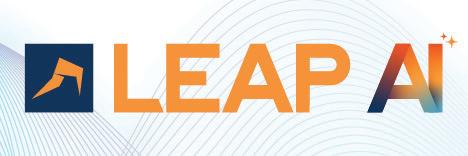
precedent orders and preparing court documents. Simply instruct LawY on the document you require, and you will receive a verified response that can be tailored for use in your document.
Draft documents with ease using LEAP’s AI-powered template Generator to help you automate and produce letters, emails and forms in less than a minute. Type in the document you’re after and
Our goal is to help law firms deliver superior legal services, reduce their operational costs, and achieve productivity gains.
— Malcolm Muthulingum CEO, LEAP Canada
select from existing correspondence or precedents from your firm; AI-generated documents via LawY; forms available from LEAP, which are included within your LEAP subscription; and Precedents from your By Lawyers subscription.
Balancing innovation with responsibility is an important factor for LEAP Legal Software. Speak to anyone in the market and they’ll tell you the same: AI is still in its infancy stage. As much as others may be looking forward, LEAP is building AI responsibly. That means professional oversight and strong data security measures; using qualified lawyers to verify output and prioritize confidentiality; utilizing inhouse teams to ensure all LEAP data is well-protected — and monitor any improvements in order to adhere to professional and ethical standards. At LEAP, we empower law firms with a reliable tool while maintaining integrity. Our clients can trust us with what they put in and what they get out.
By integrating advanced AI tools for LEAP, lawyers can focus on higher-value activities, like client interactions and strategic case management. LEAP offers a fully integrated suite of premium legal AI tools, carefully designed to meet the unique needs of law firms. Ask, Draft and Analyze with LEAP AI.
Get started today, visit: leaplegalsoftware.ca/ai

Music can set the tempo of a political campaign. But what happens when a politician decides to march by the beat of a different drummer, without asking for their permission first? This question has come up recently in American politics, when a video of Celine Dion’s “My Heart Will Go On” was broadcast at a Trump campaign rally. Celine Dion followed up with an Instagram post stating her team had not authorized such use of her song.
This article explores fair dealing and moral rights in Canada, and how they intersect with Canadian politics.
In order to perform a song or any substantial part thereof in Canada without infringing the owner’s copyright, the necessary licenses and permissions must be obtained. However, if the use falls under an exception to infringement, such as the “fair dealing” exception, no licenses or permissions are required.
Fair dealing permits the limited use of copyright protected material without the risk of copyright infringement and without having to seek the permission of copyright owners. It is intended to provide a balance between the rights of creators and users.
Fair dealing i s, however, limited to specific purposes, namely, research, private study, criticism, review, news reporting, education, parody and satire.
For political campaigns, this means that playing a popular song at a rally does not typically qualify as fair dealing. If a song is used to criticize a political opponent or provide social commentary, such use may fall under the categories of criticism, parody or satire. Arguably, however, most political uses of music are more about creating a connection with voters than delivering a critique. Fair dealing, thus, may not always provide a defense to copyright infringement in political contexts.
reporting do make non-explicit references to the moral right of attribution as requirements for successful invocation of the respective exceptions, the provision on parody, satire and research makes no mention of moral rights, and none of the fair dealing provisions mention the moral right of integrity whatsoever.

This means that if a politician uses an artist’s song in a way that is covered by fair dealing (i.e., for criticism or parody), but in doing so distorts or modifies the song, or uses the song in association with a product, service, cause or institution in a way that violates the artist’s moral rights, the artist may have a claim for moral rights infringement.
Moral rights protect the personal rights of artists and are separate from economic rights. Moral rights treat the artist’s oeuvre as an extension of his or her personality, focusing on the artist’s right to both the integrity of the work and their authorship of it.
In Canada, whether fair dealing provides an exception to moral rights infringement is not clearly stated in the Copyright Act. The statutory fair dealing exceptions appear to shield a user from liability for infringement of traditional copyright, but not from claims of moral rights infringement.
While the statutory provisions on criticism, review and news
While the Copyright Act may provide some leeway for political campaigns to use copyrighted music without permission for limited purposes such as criticism or parody, it does not expressly provide blanket protection from liability for moral rights infringement. Moral rights introduce an additional layer of protection for artists, and politicians who seek to capitalize on popular songs should tread carefully. In the end, a campaign’s selection of music might hit the wrong note, legally speaking, if the artist’s rights are ignored.
Written by Flora Wu and Nicholas James, members of CBABC’s Intellectual Property & Technology Law Section Executive.
The concept of “unbundled legal services,” also known as limited-scope representation, has seen significant success in Family Law in recent years. However, its advantages extend beyond Family Law, particularly when assisting clients before administrative tribunals. Tribunals like the Civil Resolution Tribunal, the Human Rights Tribunal, and the Residential Tenancy Branch are designed to help self-represented litigants resolve disputes without full legal representation. Although this design promotes empowerment, it also presents challenges that unbundled legal services can effectively address.
Administrative tribunals by their very nature aim to provide accessible, fair, and efficient dispute resolution to lay litigants. For example, the Civil Resolution Tribunal Act 1 mandates in section 20 that “parties are to represent themselves in a tribunal proceeding.” This rule underscores the principle of self-representation, yet oftentimes practical challenges also arise.
Navigating procedural intricacies, understanding legal principles, and presenting a case can be overwhelming for laypersons and these difficulties are particularly evident when a party receives an unfavorable decision (at the tribunal level) and seeks judicial review. At this stage, many self-represented litigants approach lawyers for assistance, often too late to correct any procedural missteps or to present new and crucial evidence. This highlights the need for early legal support that unbundled legal services can provide.
By offering discrete legal services, lawyers can assist clients with specific aspects of their cases, without the costs associated with full representation. This model puts the client in the proverbial driver’s seat, while also being more cost-effective for those clients (in most cases). It allows lawyers to provide targeted legal assistance such as preparing documents or offering strategic advice based on a client’s needs, thereby enhancing a litigant’s ability to navigate the tribunal system effectively on their own.
Unbundled legal services can take various forms. For instance, lawyers may offer hourly consultations where clients can book a set number of hours at a fixed rate to draft a legal memorandum on their specific issue. Alternatively, fixed fees can be charged for stages in a claim, such as preparing written application materials or organizing evidence for a trier of fact. As one client described it, unbundled legal services are akin to a restaurant menu, allowing them to select the services they require without unnecessary extras.
Another benefit of providing unbundled services is that it serves as a probation period for clients, where they get to assess their lawyer’s work while retaining the ability to end the relationship for any reason. In the writer’s experience, many unbundled retainers lead to a full representation once the clients understand the process of taking a claim to a hearing.
Lawyers need to be mindful, however, that providing unbundled legal services also comes with risks, such as the scope of work ballooning beyond what was initially agreed upon. As with any client file, it is imperative that lawyers expressly set out the scope of their assistance early in the form of a retainer agreement, which provides for a mechanism to amend the scope of work on an ongoing basis. While this may take a bit more time to customize each retainer agreement to a client’s needs, the exercise of specifying the tasks that you agree to perform for a client oftentimes sets the necessary boundaries to avoid many of the pitfalls for providing unbundled services.
The benefits of unbundled legal services are clear, and there is a growing demand for such services beyond the family law setting. Lawyers are encouraged to explore this opportunity to enhance access to justice and to expand their practice. By offering unbundled services, lawyers can make a meaningful impact and provide valuable support to self-represented litigants.
In conclusion, unbundled legal services are a practical and effective way to assist clients in administrative tribunals. They offer cost-effective, targeted assistance that empowers self-represented litigants and prevents procedural errors. As the legal landscape evolves, unbundled services will play an increasingly important role in ensuring all individuals have access to the legal support they need.
1 ([SBC 2012] CHAPTER 25).
Written by Arash Ehteshami, member of CBABC’s Unbundled Legal Services Section Executive.
CHRISTINE MURRAY
Neurodiversity in law firms is starting to receive some welldeserved attention, however not enough. I spoke with neurodivergent lawyers about their lived experiences in the legal profession, with a focus on law firms. What became clear from my discussions is that law firms are not yet taking a standard or global approach to addressing neurodiversity.
Many lawyers reflected that they are managing their neurodivergence individually, either masking their unique traits and symptoms or creating their own accommodations. Some common feedback from lawyers regarding how they are navigating neurodivergence in law firms includes managing sensory sensitivity in spaces they can control (like reducing noise, scent, lighting or distractions), requesting flexible working arrangements, and/or creating informal peer support networks.
Often these lawyers may experience burnout, or poor physical and mental health. Missing standard targets can result in negative assessments, missed promotions, or even termination. This is particularly the case when lawyers are not comfortable sharing their accommodation needs relating to neurodivergence due to a fear of a stigma being attached.
With hope in mind, I reached out to an expert on the topic. Sarah Ennor is a speaker who helps law firms, businesses and individuals understand neuroinclusion. Sarah has Attention Deficit Hyperactivity Disorder (ADHD) and is an accomplished lawyer. She’s worked
in-house and founded her sole practice, Growth Counsel. She shares what she’s learned from law firms and lawyers so far.
“These statistics are based on known diagnoses and self-disclosure. Globally, it’s estimated that about 20% of adults are neurodivergent. Illustrative estimates in Canada are 1-2% have autism, less than 1% have Tourette Syndrome, 6-17% have dyslexia, and 3-6% have ADHD. And yet a 2016 survey of US lawyers found that 12.5% of lawyers have had experience with ADHD! Lawyers may not know they are neurodivergent, having developed their own coping strategies. Others may fear disclosing because of significant stigma.”
Leveraging this can benefit neurodivergent clients, too.”
“Law firms and departments are early in this journey. For some the topic is completely new. Others are considering their strategies for education and policy in this area. Standalone employee-led resource groups are springing up, while some firms are combining neuroinclusion with mental health or disability initiatives. A few have organized internal trainings or panel discussions, often beginning with autism awareness. Law firms are eager to learn and want to get neuroinclusion right. I encourage them to be brave and take their first steps.”

“Every neurotype offers unique skills in the workplace. ADHD lawyers can be efficient and creative risk-takers who can take the full picture into account. Autistic lawyers may be great with details and patterns. Dyslexic lawyers may excel at visualizing solutions. Each person is different, but embracing every processing style (including ‘typical’ ones) leads to better results. Plus, folks with similar neurotypes are great at empathizing with one another, often working well together.
“First, it’s critical to understand how these conditions may present at work and uncover our own biases. Lawyers are trained to be curious about legal facts, but can be rigid when faced with different behaviours. Rather than expecting lawyers to fit within outdated norms of ‘lawyerly’ professionalism, we can focus on the desired performance outcomes. I don’t know a single lawyer who isn’t driven to succeed in their own way! Start by adopting a curious mindset, assuming best intentions, and trusting each individual to be the authority on their own support needs. Lawyers who feel safe and supported will share how they work best and be more receptive to actionable feedback.”
Christine Murray is Chair of the Family Law - Vancouver Island Section and interviewed
Sarah Ennor. Sarah is an ADHD pathfinder, international athlete and coach, travel adventurer and lawyer on the side — growthcounsel.ca
You can support your clients in creating a kinder future for animals by helping them leave a compassionate gift in their will.

Tanya Newcomb foreverguardians@spca.bc.ca 1.855.622.7722



CLEBC is proud to introduce Child and Family Services Law and Practice, a vital resource for practitioners in the field of child and family services law.
This comprehensive guide offers essential insights into both the substantive law and the procedural aspects of the practice, addressing the unique challenges faced in this area. The book provides a thorough analysis of governing laws and principles, with a special focus on Indigenous perspectives and children’s rights. It also delves into contextual issues such as cultural humility, trauma-informed practice and the implications of Canada’s colonial history.
Practitioners will find valuable guidance on handling cases involving Fetal Alcohol

Spectrum Disorder, Charter challenges and class actions. Key features include annotated texts of relevant legislation like An Act respecting First Nations, Inuit and Métis children, youth and families and practical tools such as checklists and forms to streamline legal processes.
This publication is designed to equip lawyers with the knowledge and resources needed to navigate the complexities of child and family services law effectively. For those seeking a deeper understanding and practical support in this field, Child and Family Services Law and Practice is an indispensable tool.
Discover more about this essential resource at cle.bc.ca/808
GLEN STRATTON AND BREANNE MARTIN
On November 30, 2023, the Sexual and Gender Diversity Alliance (SAGDA) Section and the Aboriginal Lawyers Forum (ALF) Section hosted a joint event titled, “A Discussion with The Honourable Harry LaForme.” Hosts Glen Stratton and Breanne Martin spoke with Justice LaForme about intersectionality and honouring Indigenous and LGBT histories and identities in the legal sphere.
Justice LaForme is a member of the Eagle Clan of the Mississaugas of the Credit First Nation. He was called to the Ontario Bar in 1979 and appointed to the Ontario Superior Court of Justice in 1994. In 2002, the then Justice LaForme wrote the groundbreaking same-sex marriage decision in Halpern v. Canada (A.G.), 2002 CanLII 42749, finding that the common-law rule defining marriage as being the “lawful and voluntary union of one man and one woman to the exclusion of all others” violated section 15 of the Charter. His decision was upheld by the Ontario Court of Appeal.
In 2004, he was appointed to the Ontario Court of Appeal, making him the first Indigenous person to be appointed to an appellate court in Canada. He retired from the Bench in 2018 and is currently senior counsel at Olthuis Kleer Townshend LLP in Toronto. In 2019, he was the recipient of the CBABC SAGDA Ally Award for his commitment to advancing the cause of equality for
lesbian, gay, transgender and twospirit people within the Canadian legal profession.
During our discussion last November, Justice LaForme spoke about intersectionality and 2SLGBTQIA+ communities as well as honouring our history and future within the legal profession. It was an incredibly inspiring and informative discussion.
The importance of diversity on the Bench was a recurring theme throughout our discussion. Justice LaForme shared insight into his experience hearing and deciding Halpern and how his lived experience as an Indigenous person impacted his decision-making. As an Indigenous person who had spent
Indian Act status for marrying a man without status.
Justice LaForme also talked about the challenges he experienced being the only Indigenous judge at the Ontario Court of Appeal. He expressed how he had hoped his appointment would pave the way for others and was


disappointed when very little progress was made in this regard.
“Your generation has a big task: to move our common issues forward and keep the ones we’ve already achieved...”
most of his life on his reserve, Justice LaForme understood what it was like to have the government control almost every aspect of one’s life. This includes decisions as personal as who one chooses to marry. Until 1985, First Nations women lost their
Justice LaForme also shared advice regarding how to advocate for our communities in the current political climate and how to remain strong in the face of these challenges.
After the presentation, Justice LaForme shared with us the following: “Your generation has a big task: to move our common issues forward and keep the ones we’ve already achieved. Good luck. It sounds like you guys are up to the task.”
Glen Stratton is Anishinaabe from the Mississaugas of the Credit First Nation. He practises at Ascent Employment Law Corporation in British Columbia. Breanne Martin is Métis and Anishinaabe from Northwestern Ontario. She practises at Woodward & Company Lawyers LLP in Victoria.




LEE M.G. NEVENS President Department of Justice Canada Vancouver
DANIEL A.T. MOSELEY Finance & Audit Committee Chair McQuarrie Hunter LLP
Surrey
ADAM C. MUNNINGS
Aboriginal Lawyers Rep Munnings Law West Vancouver
SARAH L. KLINGER Director at Large Law Office of Sarah L. Klinger Victoria
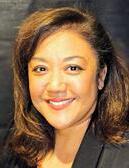



MYLENE C. DE GUZMAN First VicePresident De Guzman Law Centre Port Moody
DIMPLE KAINTH EDI Rep Satya Law
Burnaby
NATHAN R. BAUDER Director at Large Nathan R. Bauder Law Corporation Dawson Creek
RANDY W. ROBINSON Director at Large Crown Counsel Chilliwack



PATRICIA D. BLAIR Second VicePresident River Valley Law
Duncan
DAN W. MELNICK Young Lawyers Rep Clark
Wilson LLP Vancouver
CONNOR BILDFELL Director at Large McCarthy Tétrault LLP
Vancouver

Trauma exists in many aspects of the Crown legal system. The adversarial nature of legal proceedings often fosters a hostile environment, and prolonged legal battles can contribute to ongoing anxiety and uncertainty. While the legal system aims to deliver justice, it can inflict and further exacerbate trauma.

As part of our dedication to supporting best practices, the British Columbia Law Institute is releasing a guide this fall to help legal professionals adopt trauma-informed practices in their legal writing. This guide offers practical tools and tips for creating legal documents that are sensitive to the experiences of those affected by trauma. Since many involved in legal processes have likely experienced trauma, it’s crucial that legal writing evolves to meet their needs.
Trauma-informed legal writing improves the clarity and accessibility of written work, fosters trust, and addresses the emotional and psychological impacts of trauma. By integrating these approaches in their writing, legal professionals can produce documents that are supportive, compassionate and legally rigorous. This guide aims to equip legal professionals with the strategies needed to implement a traumainformed approach, contributing to a more just and empathetic legal system.
For updates on the guide and other resources, please visit BCLI’s website at bcli.org/sectors/practicaltools-and-resources

ANDREW TANG
The social spotlight on the importance of diversity and inclusion has perhaps never shone brighter; however, as a profession that is commonly viewed as highly conservative and notoriously resistant to change, the practice of law still has some way to go before being able to bill itself as truly reflective of the community and people that it exists to serve. By meaningfully embracing and enhancing diversity, law firms and lawyers can reap important social and business benefits that will allow them to evolve in–step with society.
From a management perspective, research shows that the benefits of diversity go beyond the strictly business side of things, as diversity within the workplace increases not only profitability but can help with both retention and recruitment as well. In addition, operating in an increasingly diverse world necessitates that law firms and other service providers follow suit, lest they find themselves left behind and unable to meet the growing needs of their clients.
There is also a growing understanding that fostering diversity is, at its core, the right thing to do, as employers want people to feel comfortable showing up to work as who they truly are. To that end, allowing people to be their authentic selves facilitates the creation of
meaningful connections and enables people to excel in their role and do the best job possible. In law, great importance is placed on workplace culture, with a firm being only as good as the people that comprise it. Therefore, cultivating a diverse workplace where people feel safe and supported undeniably strengthens this important facet of firm life.
Having established the broad benefits of diversity, the question necessarily becomes how to implement initiatives within a law firm so that they can have a meaningful impact.
being able to present as their authentic selves, while also allowing them to feel that they are a valued part of a team. This can be navigated by regularly checking–in with people and ensuring that they feel both included and supported in their day–to–day roles and in relation to firm initiatives and events; and
Be flexible and thoughtful: recognize that fostering diversity is an ongoing process that requires flexibility and constant reassessment. Therefore, firm policies and processes should be regularly evaluated to determine if they are too prohibitive or if they can be improved. In this regard, obtaining (anonymized) feedback will also help to identify any gaps or issues of concern.
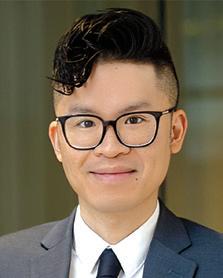
Unfortunately, there is no universal way to achieve this; instead, the meaningful application of diversity begins with a shift in thinking and questioning some imbedded assumptions that many of us have in relation to the customs of the profession. Consider the following:
Use inclusive language: an offer to “grab drinks” is typically the profession’s default approach to spending time socially; however, what if the invitee does not drink? Instead of defaulting to “drinks,” consider using more open and inclusive language in an attempt to accommodate others’ preferences;
Navigate tensions thoughtfully: tension may exist between ensuring that people feel comfortable
Ultimately, diversity is not a box that you can simply tick and move on from; it is a wholesale change in thinking that requires buy–in from all levels of a law firm to be truly effective. The practical reality is that although there will be those who embrace the move toward diversity wholesale, there will inevitably be others that are more resistant to change and require some convincing. All meaningful change happens incrementally, so even in the face of resistance, it is important to remain optimistic and continue working toward achieving a more inclusive and diverse future that we can all benefit from.
DIMPLE KAINTH
Despite recognition of the importance of equity, diversity and inclusion (EDI), significant barriers deeply rooted in the structure, culture, and practices in the legal profession continue to impede progress in this area. Understanding these barriers is vital for developing strategies to promote an inclusive and fair environment where people are happier and feel like they belong.
1. Historical, Systemic and Institutional Barriers
A significant factor impeding EDI in the legal profession is the long-standing history of exclusion and privilege favouring certain groups. An example is the cost of legal education. The financial burden typically excludes people from lower socioeconomic backgrounds. This exclusion disproportionately affects racial minorities and other marginalized groups, limiting their access to the profession.
The recruitment practices of law firms and institutions usually perpetuate existing inequalities by relying on established networks and criteria that prioritize traditional markers of success, such as attending prestigious law schools, which are less accessible to underrepresented groups. Consequently, the pool of candidates considered for top-tier legal positions stays homogeneous, hindering diversity within the profession.
2. Unconscious Bias and Discrimination
Unconscious bias and discrimination are pervasive in the legal profession, affecting everything from hiring decisions to work distribution and promotions. Efforts to address these issues
are ineffective, and people continue to harbour biases that influence their judgments and actions, resulting in the under representation of women, racial minorities, LGBTQ+ individuals, and people with disabilities in our profession, especially in leadership roles.
Our profession is characterized by a rigid, hierarchical structure favouring conformity and traditional notions of professionalism. This stifles diversity by discouraging individuals from expressing their unique perspectives and experiences.
Additionally, the competitive nature of the profession creates an environment where people feel pressured to conform rather than advocate for change. This pressure is particularly intense for those from underrepresented groups, who fear that speaking out about discrimination or advocating for diversity will cause them to be labeled as a troublemaker, and negatively affect their careers. As a result, they avoid difficult conversations about EDI, and the status quo remains.
decision-making level also means that EDI issues may not be prioritized.
The lack of role models and mentors from diverse backgrounds can also hinder the career progression of minority lawyers. Without representation in leadership, it is difficult to create an environment where diverse individuals feel they belong and believe they can reach the highest levels of the profession.

Even where firms and organizations have implemented EDI initiatives, these are often superficial and do not address the root causes of inequality. For example, diversity training may be conducted, but without ongoing commitment and support, it does not change the underlying culture. Similarly, hiring diverse candidates without creating an inclusive environment supporting their success leads to high turnover, perpetuating the cycle of under representation and continued attrition from the profession.
Leadership within the legal profession often lacks diversity, which can negatively affect EDI efforts. When leadership is homogeneous, decisionmaking reflects the experiences and perspectives of that limited group, often resulting in policies and practices that do not effectively address the needs of underrepresented groups. The absence of diverse voices at the
Achieving EDI in our profession requires sustained and concerted effort to address these multifaceted barriers. It requires commitment to dismantling historic and systemic inequality, confronting unconscious biases, increasing representation, transforming firm culture, and implementing and being accountable for EDI initiatives. Only by addressing these challenges can our profession become truly inclusive and one where everyone feels like they belong. However, the first step is to have the courage to speak up about our experiences with discrimination. It starts with us.
Dimple Kainth is a lawyer, mediator, workplace investigator and consultant. She is the upcoming Chair of CBABC’s Equity, Diversity & Inclusion Committee. LinkedIn: linkedin.com/in/dkainth
JEEVYN DHALIWAL, KC
Legal regulators play a fundamental role in shaping the composition and culture of the legal profession, and are uniquely positioned to progress equity, diversity and inclusion (EDI) initiatives.
Equitable access begins with inclusive law school admissions policies, where need-based scholarships, mentorship programs, and outreach efforts to underrepresented communities are encouraged. In licensing, legal regulators must ensure that examinations and requirements do not unintentionally perpetuate biases or create barriers for individuals from diverse backgrounds. Reviewing Bar examination processes to identify systemic hurdles that disproportionately affect certain groups and introducing alternative pathways to licensure that account for non-traditional educational backgrounds may be one way to do that.
Collecting and publicizing diversity statistics is part of the Law Society’s Diversity Action Plan. The data shows a small increase over the last five years in the percentage of B.C. lawyers who identify as part of a diverse group — 16.4% of respondents identified as racialized or a person of colour in 2019, compared to 20.5% in 2023.
According to the National Study on the Psychological Health Determinants of Legal Professionals in Canada, 66.6% of ethnicized legal professionals and 75.5% of LGBTQ2S+ legal professionals experience a moderate to significant amount of psychological distress. Data like this demonstrates a clear need for accessible
mental health support and opportunities to connect, share and learn from one another.
Documentaries like “But I Look Like a Lawyer” and “But I Was Wearing a Suit” highlight the discrimination experienced by B.C.’s Pan-Asian and Indigenous legal communities, respectively. Making resources like these available through public screenings or as part of mandatory training is another step that legal regulators can take toward creating a safer, more inclusive profession.
Further, legal regulators must actively seek input from those affected by their policy decisions. For example, the Law Society’s Truth and Reconciliation Advisory Committee plays a critical role in advancing Reconciliation between Indigenous peoples and the legal profession, and advises on initiatives that promote inclusivity and support for Indigenous lawyers.
In addition to making room for more diverse voices at the top, legal regulators have the power to make meaningful changes to the way law is practised. In July 2023, the section on discrimination and harassment in B.C.’s Code of Professional Conduct was significantly expanded to include a new rule on reprisals, and concrete examples of discrimination, harassment and bullying. The Law Society Rules were also amended in December 2023 to increase flexibility around leaving and returning to practice. Changes like these boost lawyer retention for those impacted and create a safer, more inclusive working environment for all.

Diverse voices in the profession, its leadership, and on the Bench are also critical to ensure that the legal system reflects and responds to the needs of all members of society. Data from the Canadian Centre for Diversity and Inclusion’s research project, Diversity by the Numbers: The Legal Profession, shows that women and racialized lawyers are “strongly represented as articling students and associates, but that their numbers greatly reduce in partner and senior leader roles.”
Legal regulators should reflect the diversity they wish to see in the profession by actively recruiting individuals from diverse backgrounds into leadership positions and setting clear EDI goals for their own internal practices. By prioritizing diversity within their own ranks, legal regulators set a powerful example and inspire change across the legal landscape, strengthening the profession’s ability to serve society effectively and ensuring that the legal system truly reflects the diversity of the communities it serves. Sadly, in B.C., this objective is now at risk with the passing of the Legal Professions Act and its changes to board composition.
While progress has been made, we must demonstrate humility and understanding that there is always more to learn and more work to be done to support diversity in all of its forms.
Jeevyn Dhaliwal, KC is president of the Law Society of British Columbia and past president of the South Asian Bar Association of British Columbia. X: @LawSocietyofBC LinkedIn: @Law Society of British Columbia
The Law Foundation of BC is now in its third year of creating funding specifically aimed at addressing systemic inequities and access barriers that exist within the justice system.
One program that the Foundation has been proud to fund through its racial justice funding initiative is the South Asian Legal Clinic of BC, which provides low-barrier, multilingual and culturally sensitive legal information, education, advice and advocacy to South Asian people in B.C. It began as a project in 201718, when a group of South Asian lawyers brought the community together to research the community’s legal needs with a goal of finding a way to meet these needs based on the principle of enhancing community capacity, without duplicating existing services. After piloting the service for several years, principally as a volunteer exercise, the Foundation provided core funding for the clinic to hire lawyers and staff full-time. They now have seven staff, including three lawyers and two community advocates.
Providing support to develop and operate legal infrastructure to meet the unique needs of under-served communities is an important access to justice aim of the Foundation, and we look forward to expanding funding for these kinds of services in the years to come.

MARK SEEBARAN AND BRONWEN BLACK
BarTalk asked Mark and Bronwen the following questions:
1. CAN YOU BRIEFLY DESCRIBE YOUR LEGAL BACKGROUND AND PRACTICES?
Mark: I’ve worked for over 25 years in several different legal workplaces, in private practice and in government. I am of mixed racial heritage, have served on diversity committees, and have presented on diversity issues.
Bronwen: I am a six-year call who has exclusively worked in private practice. Since being called to the Bar, I have co-chaired the Equity, Diversity and Inclusion (EDI) Committee for the CBABC’s Women Lawyers Forum, co-chaired the EDI Committee for the Vancouver Bar Association, and sat on the CBABC’s EDI Committee.
2. BEGINNING AT THE START OF YOUR PRACTICE TO PRESENT, HAVE YOU OBSERVED AN EVOLUTION IN THE CONCEPT OF DIVERSITY? CAN YOU GIVE AN EXAMPLE?
Mark: Definitely. When I started, people rarely talked to me about diversity. When they did, it was to complain about affirmative action hiring policies. I put up with racist references to my background, because I had no job security.
In the last five years, there has been a renaissance in the profession’s approach to diversity. It has become commonplace for lawyers to give their preferred pronouns in all their
communications. Practice directions have de-gendered the titles of judges and court staff. Initiatives to reconcile with Indigenous peoples have greatly contributed to embracing diversity overall. Half my heritage is from what is now referenced as “settler” culture, which I never considered before.
As an older lawyer who had to endure the “bad old days,” I check myself for what I might call “survivor syndrome.” Just because I survived discriminatory treatment doesn’t mean I should expect others to, or rationalize that it “builds character.” We often don’t consider the missed opportunities of people who didn’t apply for positions of leadership because their authentic self was not recognized.
In more recent years I’ve observed a shift beyond mere rhetoric to embracing diversity as a fundamental principle. There is an increasing number of law firms and legal organizations that are implementing tangible initiatives to foster inclusivity and equity. I’ve seen a growing emphasis on unconscious bias, mentorship programs for underrepresented groups, and the establishment of diversity committees. There is still a long way to go, but as a result of these concerted efforts, the legal profession is gradually becoming a more equitable and representative space.
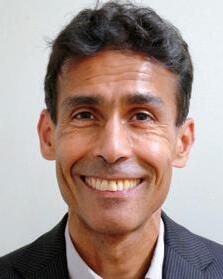

Bronwen: While my tenure has been much more brief, I have also seen an evolution since the beginning of my career.
In the last five years, there has been a renaissance in the profession’s approach to diversity.
I remember being a student interviewing at firms, and each had their own talking points when it came to diversity and inclusion. But looking around, it was hard to see those values in practice.
I really like Mark’s comment that the profession has been experiencing a renaissance. Looking back on the events of the last few years, it makes sense. There was the international reckoning with the Me Too and Times Up movements. There was the tragic murder of George Floyd followed by the powerful protests amplifying the Black Lives Matter movement. These events, and many others, screamed for change.
So while the changes have been slow... they signal a welcome (and necessary) shift. Assuming this momentum is maintained, it is exciting to think about where we might be in another five or ten years.
PAIGE THOMBS
My research explores how religious identity shapes legal practice among those practising Canadian Common Law. Most of my data comes from interviews I have conducted across Canada with lawyers, law professors and law students. While I am interested in numerous things such as how religious identity shapes/influences legal practice and whether those from religious minority groups face unique challenges within the practice, what I am most curious about are the ways in which religious belonging might both compliment and conflict with legal practice. What I have learned so far, from the perspective of interviewees — 85 in all, from a broad range of religious identities — is that religious beliefs and legal practice work together far more than they work apart.
Why then, when I tell people about my research do they respond with confusion and even contempt more often than curiosity? Generally, people respond in one of two ways: “Religious lawyers? Is that even a thing?” or “No! If you can’t separate the two, then you have no business being a lawyer.” While the latter comment has sometimes come from lefties that I tend to surround myself with, it has also come from lawyers and people who are themselves religious. What is it about legal practice and religious belonging that so
many imagine to be worlds apart? When I posed this question at a recent talk I gave, one audience member quipped, “Because law is science and religion is magical thinking!” (In my opinion, he gave too little credit to religious belief and too much credit to law.) However, in our increasingly secular world, religious belief has no space in the public sphere. This seems to be particularly felt when it comes to the practice of law. Certainly, we watched this unfold with the Trinity Western University case where — on the surface — the issue was the school’s requirement that students, faculty and staff agree to live by the rules laid out in their Community Covenant, which upholds a traditional (i.e., heterosex-

often see religion as working against liberal democratic values. I, too, have sometimes fallen prey to that way of thinking. What my research indicates, however, is that religious lawyers find all kinds of ways to braid the two identities together in ways that work toward the public good. The conflict that many imagine, rarely occurs. Despite this, many of my participants feel it necessary to, if not hide their religious identity in the workplace altogether, then at least hide the impact it has on their legal practice. This has been mostly keenly felt by the law students I have spoken to. As one law student said, “If I talk about my religious identity [in the classroom] people are going to question my ability to be a lawyer. My reputation is ruined before I start.”
“If I talk about my religious identity [in the classroom] people are going to question my ability to be a lawyer. My reputation is ruined before I start.”
ual) definition of marriage. Beyond this, however, many people simply felt uneasy at the idea of a religious law school. Perhaps this is because we
Law school curriculums across Canada indicate that lawyers are no longer expected to be entirely neutral in their thinking. Courses in feminist, Queer, and Indigenous legal theories indicate that the practice is finally valuing alternative worldviews, as long as, it seems, those worldviews are not religious in nature. As many interviewees told me, our conversations were the first opportunity they’ve been given to speak about something profoundly important to who they are. I am grateful to be able to provide a platform for them, and I hope that my work shifts the way we think about religious lawyers.

With the future of lawyer independence in question, the public and legal profession are increasingly at odds. Explore the balance between self-regulation and public interest, the influence of public outcry on cases and ways lawyers can better connect with clients.
Vancouver & Virtual | November 1
cbabc.org/Navigating
TONY WILSON, KC
We live as long as the last person who remembers us
When I was called in 1986 and started receiving copies of “The Advocate,” the first place I went to was the “Bench and Bar” section where I saw who was moving firms. Now, as my career inevitably shuffles off into the sunset, I look to see who is on the cover in the unlikely event it’s me. And I always read “Nos Disparus.”
I have been involved in the drafting of two Nos Disparus columns over the past six months; Len Polsky’s and Kathy Sainty’s. Len was my boss, my mentor and my friend since 1988. He hired me as his “junior” and I worked with him at both Ray Connell and Ferguson Gifford over a span of 10 years as a franchise lawyer. He took me to franchising conferences in Toronto, New Orleans, San Antonio and other cities where I learned all I could learn about this niche area of law, and he introduced me to as many other franchise lawyers as possible. He didn’t keep work to himself and tried to pass on to me as much as he could. When I was out of my depth, he was always available to help me become a better lawyer. As I became more senior, he would pop into my office and bounce things off of me, because he respected my opinion. When Ferguson Gifford wound down, both of us went our separate ways, but we would still meet up at conferences and have lunch from time to time. We met at a restaurant in New West in April 2023, then walked to my house and shot the breeze for three hours listening to my extended Steely Dan playlist (which I knew he enjoyed).
Part of me wonders if he knew he was ill and was saying goodbye, because he passed away only eight months later. I owe my entire professional career to Len.
Kathy Sainty worked with my wife at Kane Shannon and Weiler and then moved to the Supreme Court; eventually becoming Registrar. Kathy was a great friend, colleague and mentor to many inside and outside of the legal profession. She was generous with her time and spent countless hours volunteering both in and outside of the profession, particularly in the support of women and women lawyers. We spent a week with Kathy and her husband in Palm Desert in 2023 and she was celebrating two years cancer free. So it was sad beyond belief that a couple of months later, the cancer had returned and she passed away in January 2024.
I’ve ever been to. Brad Addison was ahead of me at law school but when I appeared in the lobby of Braidwood for my articling interview, he made me feel extremely welcome and was always a gentleman on the files that we were adverse on.
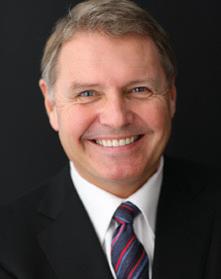
The death of a colleague or mentor is often unexpected, and takes away the opportunity of letting them know, in large ways and small, how much they made a difference at some point in our careers, or how their help or their mentorship made us better lawyers than we otherwise would have been. Like billiard balls in motion, we’re sent in unpredictable directions simply through contact with our colleagues.
There are other lawyers whose lives intersected with mine but who are no longer with us. The great John Sullivan died in a parachuting accident in 1988. Had he lived, he would’ve been my son’s godfather and on the Court of Appeal by now. Kieran Bridge was one of the smartest people I ever met and was the gold medallist in my law school class at UVic. He passed away way too early in 2018. David Long used to joke that he practised in the Insecurities Department at Douglas Symes. He died at 50 and as profoundly sad as that was, he had the most amazing celebration of life
Although I don’t believe in heaven, I believe we don’t really die at the moment of our death. Instead, we live a “second life” for as long as the last person who remembers us is alive. For me, Len, Kathy, John, Kieran, David, Brad and my other colleagues at the Bar who are no longer with us will still be with me, as long as I am around to remember them.
Tony Wilson, KC is a Vancouver Franchise Lawyer, a Life Bencher of the Law Society and an Adjunct Professor at TRU Law School. Over the past two decades, he has been a regular columnist for The Globe and Mail, Canadian Lawyer and other publications. This is his 21st year writing “Nothing Official” for BarTalk, and as everyone should know by now, the opinions expressed in “Nothing Official” are his alone and do not reflect the views of the Law Society, the CBABC or their respective members.



Jillian Foster joined KSW Lawyers as an associate in their Family Law group. She provides compassionate, practical solutions for her clients, ensuring their rights and interests are protected.
Bar
Ali Aghaamoo joined Singleton Urquhart Reynolds Vogel LLP as an associate in their Commercial Litigation, Construction and Infrastructure, Insurance, and Employment Law groups.


Kassandra Starnes joined Singleton Urquhart Reynolds

Alanna Crouse joined Ethos Law Group as an associate. Alanna practises public law, with experience in constitutional, administrative and criminal law. She has represented clients at various levels of court.
Lindsay Hiemstra joined Singleton Urquhart Reynolds Vogel LLP as an associate in their Commercial & Business Litigation and Entertainment Law groups. Lindsay has experience representing clients in mediation and courts.
Cen Yang joined Harper Grey as an

CBABC offers unique opportunities to reach thousands of BC lawyers.
Recruiters and firms post on this ‘go to’ platform to maximize exposure to 8,000 CBABC members.
News + Jobs
Tap into more than 6,800 subscribers who receive the latest news, events, PD and exclusive job opportunities every week.
Target specific areas of law by advertising direct to groups who share common interests.
Position your business in front of your target audience through sponsored industry events, PD workshops and targeted conferences.

Strategically place advertising across multiple platforms or throughout the year and save on your overall advertising package. Contact us to talk about your current marketing objectives.
cbabc.org/ads | ads@cbabc.org